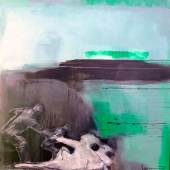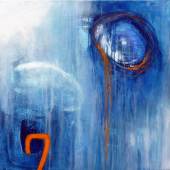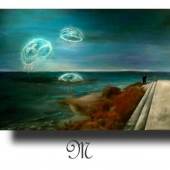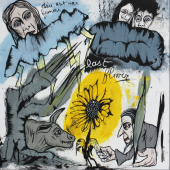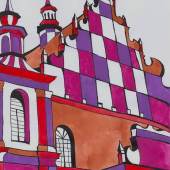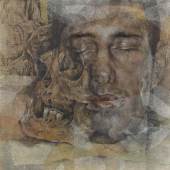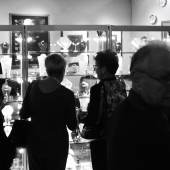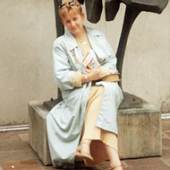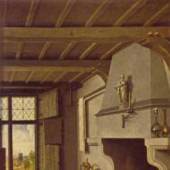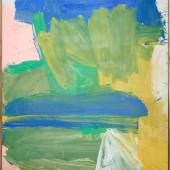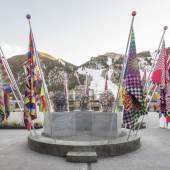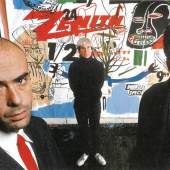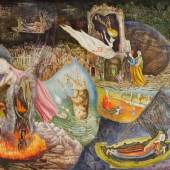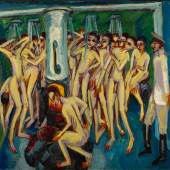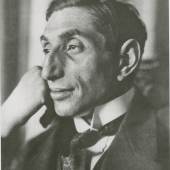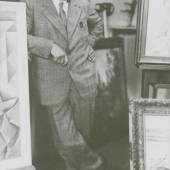Two Restituted Masterworks from the Alfred Flechtheim Collection at Sotheby’s this November in NYC
-
Auktion12.11.2018
In 1919, Flechtheim reopened his gallery and in short order established branches and representative offices in Berlin (1921), Frankfurt (1921), Cologne (1922) and Vienna (1922). In 1921, he moved his center of operations to Berlin, where his gallery parties became legendary, attended by sportsmen, artists, collectors, the literati, publishers, bankers and socialites. At the same time, Flechtheim founded one of the most important illustrated magazines of the 1920s and 1930s: Der Querschnitt (‘The Cross Section’). The magazine started as a publicity vehicle for the gallery, but under the editorship of Hermann von Wedderkop grew into a massively inventive and influential journal, with contributors including Ernest Hemingway, André Gide, Jean Cocteau and Max Schmeling.
But Flechtheim’s success in Germany would not last. The Frankfurt and Cologne branches of the gallery closed in 1925 and, after the crash on the New York stock exchange in October 1929, sales declined. His Jewish faith, his flamboyant reputation and his ardent support of the avant-garde exposed him to persecution. In March 1933, a Nazi-mob stormed and dismantled an auction jointly organized by Flechtheim and two colleagues in Munich. The following month, a Düsseldorf newspaper published an incendiary article attacking ‘Der Kunstjude’ (the ‘Art Jew’), Flechtheim and the avant-garde artists whom he supported. Alfred Flechtheim fled Nazi Germany via Switzerland to Paris. Eventually in December 1933, he went into involuntary exile in London, where he worked with the Mayor Gallery, and tragically died there just four years later at the age of 58.
Even after his death Alfred Flechtheim was a magnet for Nazi hate. In 1937, the Propaganda Ministry organized a touring exhibition of so called ‘degenerate art’, art by titans of the 20th Century that had been deaccessioned from Federal Museums for failing to chime with Nazi aesthetics. The posters and catalogues for these exhibits used Alfred’s distinctive features as visual shorthand for all that the Nazis criticized in high culture in Weimar Germany.
DAS SOLDATENBAD (ARTILLERYMEN)
Painted in 1915, immediately following Kirchner’s release from military service, Das Soldatenbad is an arresting representation of the psychological realities of war. Executed in Kirchner’s fully developed Expressionist pictorial style, the monumental work daringly explores the anxieties brought on by modernization in the early-20th century, while continuing to develop the artist’s preoccupation with the human body that he held since his earliest days as a member of Die Brücke. While Kirchner joined that avant-garde moment after moving to Berlin from Dresden in 1911, the outbreak of World War I in the summer of 1914 imparted a greater sense of personal urgency, and with it brought the brutal dislocation of everyday life in Germany. In the spring of 1915, to avoid conscription into the infantry, Kirchner enlisted in the Germany army as an artillery driver. However, he was discharged in November of that year, unable to bear the mental and physical strength necessary to continue and serve at the front.
The lasting horrors of the war would prove to be both the source of inspiration for the present masterwork as well as the catalyst for Kirchner’s untimely demise. Das Soldatenbad depicts a group of young military recruits herded together in a shower hall, confined within a small space under the oppressive gaze of a uniformed superior. Literally and figuratively exposed, the men are devoid of individualistic qualities: the identical yellow pallor of their skin, short cropped hair and dark eyes are all executed in a highly-stylized manner that removes any distinctive characteristics and contributes to the overwhelming sense of loss of identity. No gesture or eye contact is exchanged between the recruits, further isolating them from one another.
When Alfred Flechtheim fled Germany in 1933, the present work was in the custody of his niece, Rosi Hulisch, who remained in Nazi Germany until her death in 1942 on the eve of her deportation for a concentration camp. In 1938, the work was acquired by a member of the Nazi party, Kurt Feldhäusser, who died shortly thereafter, in 1945. Feldhäusser’s art collection was left to his mother, who consigned it to the Weyhe Gallery in New York in 1949. In 1952, it was purchased by Mr. and Mrs. Morton D. May of St. Louis, who then gifted the work to The Museum of Modern Art, New York in 1956. In 1988, the painting was transferred by The Museum of Modern Art to the Solomon R. Guggenheim Foundation in exchange for other works. The Guggenheim relied on Donald E. Gordon’s catalogue raisonné of Kirchner’s work, which incorrectly stated that before Das Soldatenbad had entered Feldhäusser’s collection, the painting had been owned by German collector Hermann Lange. Recent research undertaken by the prestigious institution shows that the painting was owned at that time by Flechtheim and not Lange.
The painting was voluntarily restituted to the heirs of Alfred Flechtheim by the Solomon R. Guggenheim Museum and Foundation in 2018 after an extensive examination of the extraordinary circumstances surrounding the painting, and in keeping with the 1998 Washington Declaration on Holocaust Era Assets and the guidelines of the American Association of Museum Directors.
JOSEPH DE MONTESQUIOU-FEZENSAC
A masterpiece from the pinnacle of Oskar Kokoschka’s early portraiture, Joseph de Montesquiou-Fezensac is a harbinger of Expressionism and a token of the seismic shift that was occurring in the visual arts at this time, which would only be shaken by the complete destruction of the Austro-Hungarian Empire in World War I.
-
05.10.2019 - 13.10.2019Am 5. Oktober rollt die FAIR FOR ART Vienna der Kunst zum dritten Mal den roten Teppich aus. Mehr...
-
Man nimmt an, dass es sich bei Robert Campin um jenen Maler handelt, der unter dem Namen "...
-
16.04.2024 - 15.09.2024Two stays in Italy inspired Willem de Kooning to bold experiments in his art, a new exhibition in...
-
20.04.2024 - 24.11.2024Jeffrey Gibson on Representing the United States and Himself By Melissa Smith | Feb 16, 2024 From...
-
13.05.2024 - 15.05.2024Sotheby’s Sealed is thrilled to present this spectacular Mercedes-Benz 300 SL Alloy...
-
14.05.2024Warhol & Basquiat’s Collaboration Series Masterwork To Highlight Sotheby’s...
-
15.05.2024T he most significant work by the celebrated Surrealist artist Leonora Carrington, Les...
-
12.11.2018Auktion »
.
